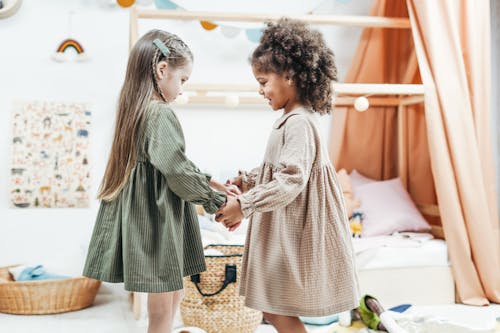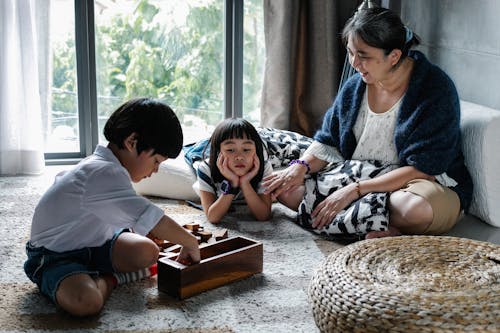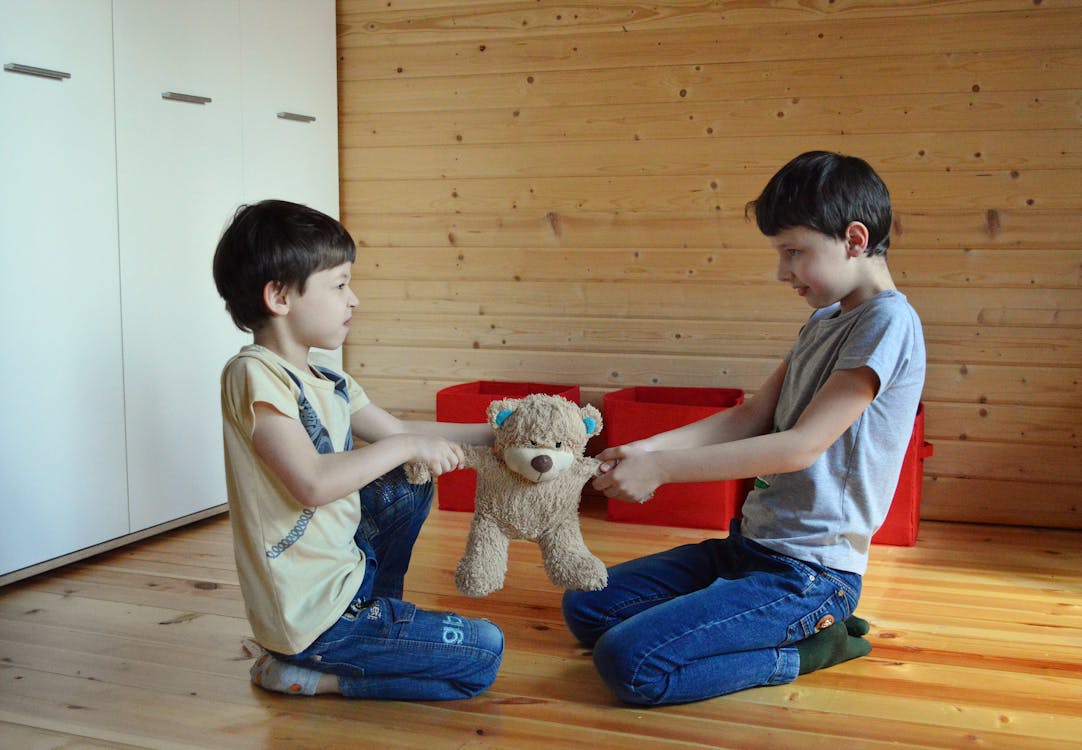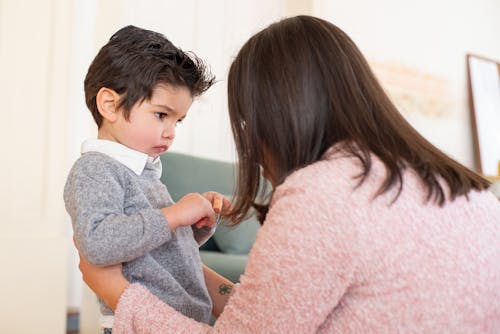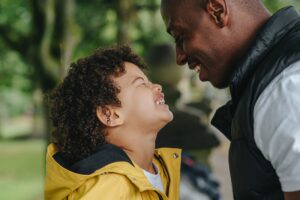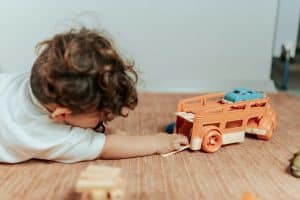The start of the school year, preschool or elementary school, is a time to make new friends and rekindle existing friendships. Before age four, most children do not possess the social-emotional skills to develop true friendships. Toddlers and two-year-olds play parallel, playing next to someone using the same materials or toys. Around age three, children will seek out favorite playmates but often play with any child who engages with them.
As children approach ages four and five, most form a special friendship with one or two other classmates or peers they see and play with regularly. However, even though actual friendships don’t start to form until a child approaches kindergarten, there are many things parents and educators can do to build social-emotional skills and foster young friendships.
Ways to Foster Young Friendships
Friendships are based on shared likes and interests. However, they also require compromise, understanding other points of view, effective communication skills, and genuine care and feelings for others. As parents, we cannot control what our child likes and dislikes, but we can teach them the tools to foster young friendships.
Create Opportunities for Play
Kids have to play with one another to form friendships. If your child attends preschool or kindergarten, they have built-in playtime with peers. However, if you are a stay-at-home parent, it is essential you create opportunities for your child to interact with other kids their age. Siblings close in age are great, but all kids need playmates outside the home!
Something as simple as a twice-weekly trip to the local playground where they play and interact with other kids is great! Music classes, sports classes or pee-wee teams, part-time preschool, or childcare are other fantastic ways to get your little one socializing.
Teach Them to Lose Gracefully
Losing is one of the hardest lessons we all have to learn! No one likes to lose, but children must learn to lose gracefully. The best way to do this is to play lots of games together and don’t “cheat” so they win. Disappointment is part of life. It is natural for parents to want to shield their kids from upset and loss, but if they never learn to lose at home, when it happens in the real world, they won’t possess the skill to handle it, which can lead to conflict among friends.
Likewise, when you lose a game, show them it is OK and only a game! Teach your kids it is alright to feel disappointed by a loss or not getting or doing something they wanted, but what’s important is how they handle that loss.
Help Them Solve Conflicts
Our job is to help our kids understand friends don’t always agree, that there are other points of view, and how to resolve issues when they arise. Children don’t possess the social-emotional skills to handle conflict well; it’s why little kids hit, bite, and have tantrums. Therefore, we must teach them the tools needed to solve conflicts.
The best method is to remain neutral when a conflict arises and ask each child what happened. Resist the urge to jump in and blame one child or the other. Just because you saw Jimmy hit Susie doesn’t mean Jimmy is all wrong. Yes, hitting is not OK, but what happened right before Jumm hit Susie? Did she take his toy? Did she call him a name? Maybe she hit him, and you didn’t see it. Help children discuss what happened and then reach a solution together.
Here is a sample dialogue to help children solve their conflicts:
Adult: “Jimmy, you hit Susie, and that is not OK. Can you tell me what happened so we can solve this together?
Jimmy: “She grabbed the car I was using.”
Adult: “She grabbed the car you were using. That must have made you feel upset.”
Jimmy: “Yes. It was mine.”
Adult: “I understand it upset you, but hitting is not OK. What could you have done instead of hitting?”
Jimmy: *Shrugs*
Adult: “Think about what you could do besides hitting when someone takes your toy while I talk to Susie. Susie, can you tell me what happened?”
Susie: “I wanted the green car. He wouldn’t give it to me.”
Adult:” You wanted the green car. Did you ask Jimmy for his turn?”
Susie: “Yes, and he wouldn’t give it to me.”
Adult: “I see. So you became upset and grabbed the toy. Grabbing toys from our friends is not OK. What could you have done instead of grabbing when he said no?”
And so on. These conversations can be tedious and time-consuming, but they are also the best way to teach children to solve conflicts. Empowering children by giving them a voice and including them in the solution teaches them how to solve problems and conflicts.
One of the best books on the subject is You Can’t Come to My Birthday Party by Betsy Evans. While the book is geared toward the early childhood classroom setting, parents can also use tactics and skills at home!
Teach Empathy
Empathy is essential to friendship and interacting with peers. Your child does not have to be friends with everyone to empathize with them. And possessing empathy will make them a better friend to others! Reading books is a great way to teach empathy. Your child can put themselves into the shoes of the different characters as you discuss feelings and actions.
Empathy teaches children to see the world from other perspectives and promotes kindness. Taking care of a pet is an excellent way to teach empathy. So is exploring other cultures, art, and music!
Teach Them to Establish Boundaries
An excellent quote I hear lately, courtesy, believe it or not, of Ashley and Mary Kate Olsen, is, “No is a complete sentence.” Teach your child that being a friend doesn’t mean they must say yes to everything. This tip will save you and your child some heartache when the tween and teen peer-pressure years come along!
Having boundaries with the people you care about and love is OK. In fact, it is essential because the people we are closest to are often the ones most likely to overstep or take us for granted. Not because they mean to, but because they feel so comfortable around us. Teach your child it is OK to say no if they don’t want to play a game, assume a role, or give a hug! Children should never be forced to hug or kiss someone, even their parents if they don’t want to.
One way parents can do this is by establishing boundaries with their children. Moms and dads don’t have to be at the beck and call of their kids. If your child wants you to do something, but you don’t have the energy or mental bandwidth, it is OK to say no to them. You don’t have to explain, but you help your child empathize and understand by giving one. For example, “I would love to play Candyland with you, but I have a big headache right now. I promise I will play with you before bedtime, but I cannot do it now.”
Friendships are important to all of us, and learning the skills to be a kind and supportive friend early on will benefit your child their entire life! Foster your little one’s friendships by teaching them empathy, conflict resolution, and how to establish healthy boundaries. Offer them plenty of play opportunities and teach them how to lose gracefully, and your little one will have the tools needed for forming successful friendships!
By L. Elizabeth Forry, September 5, 2023

